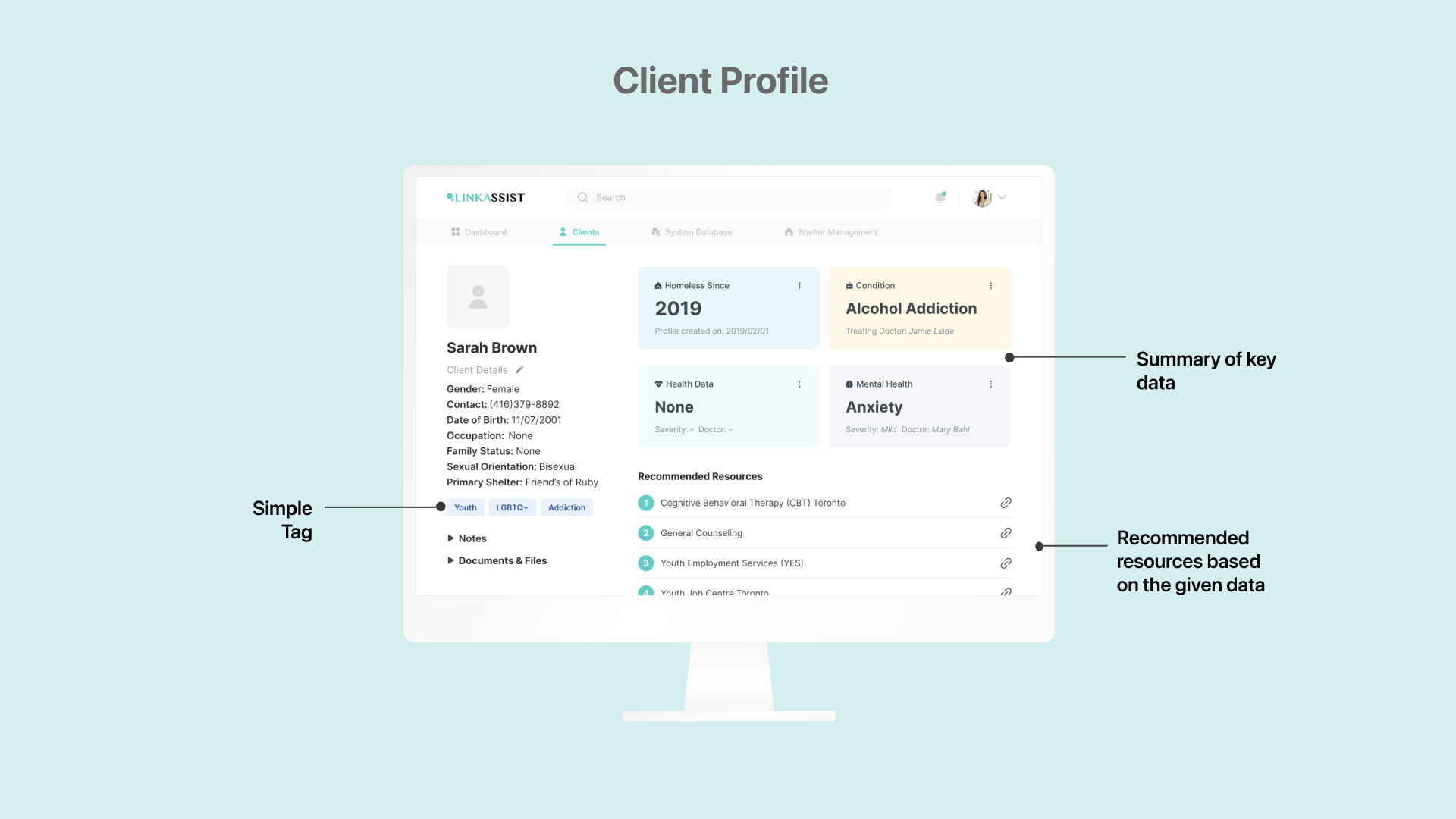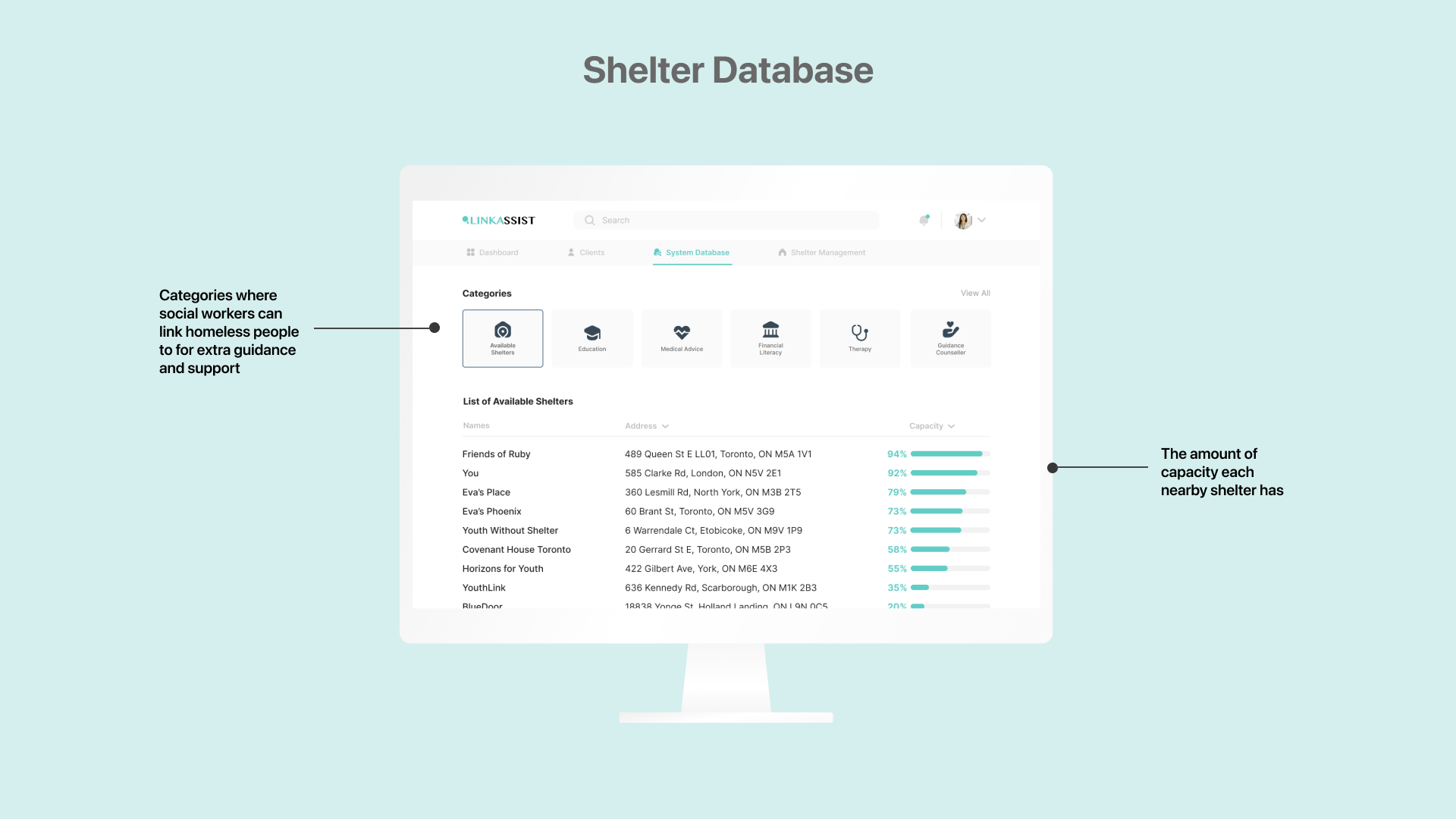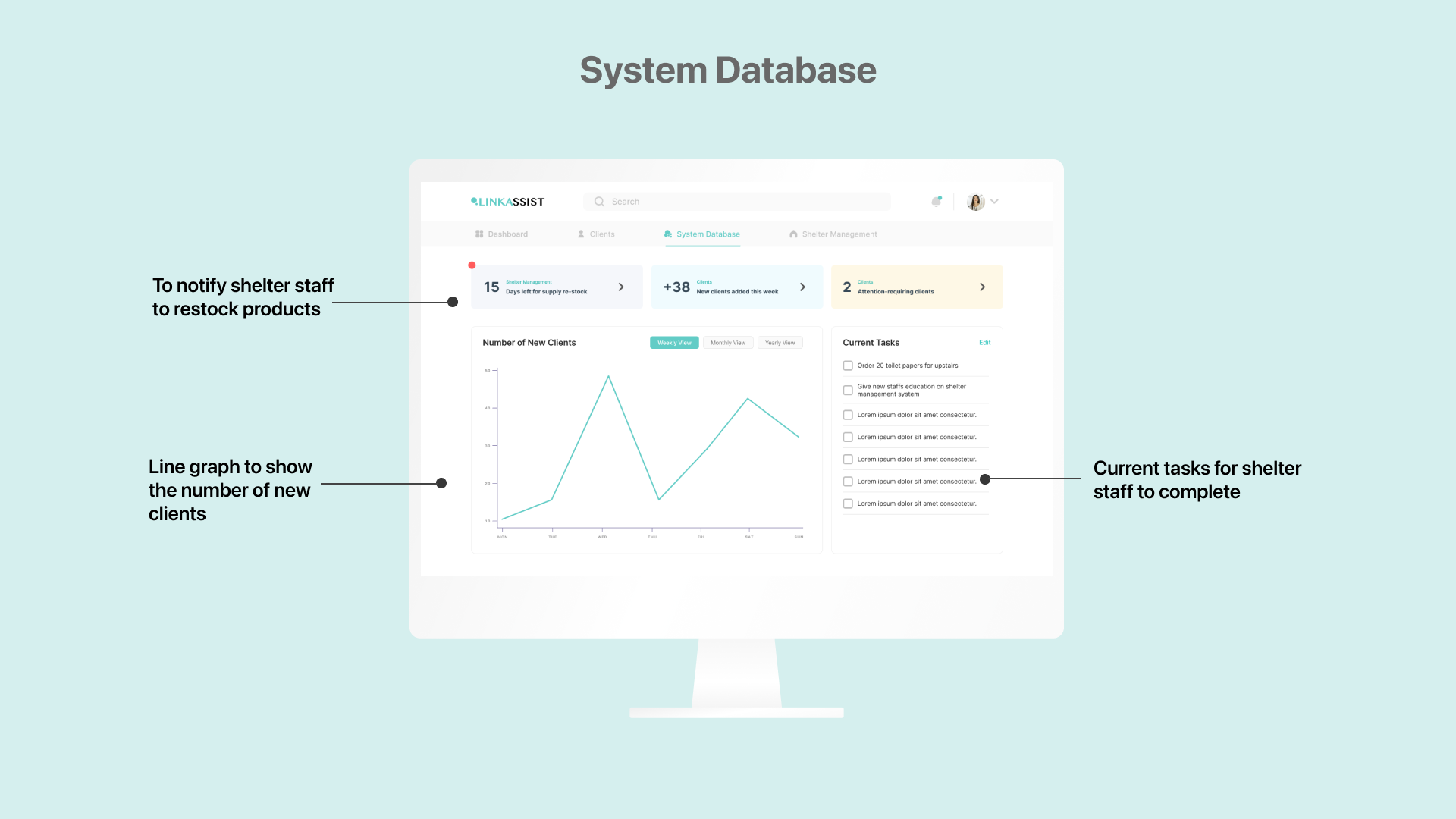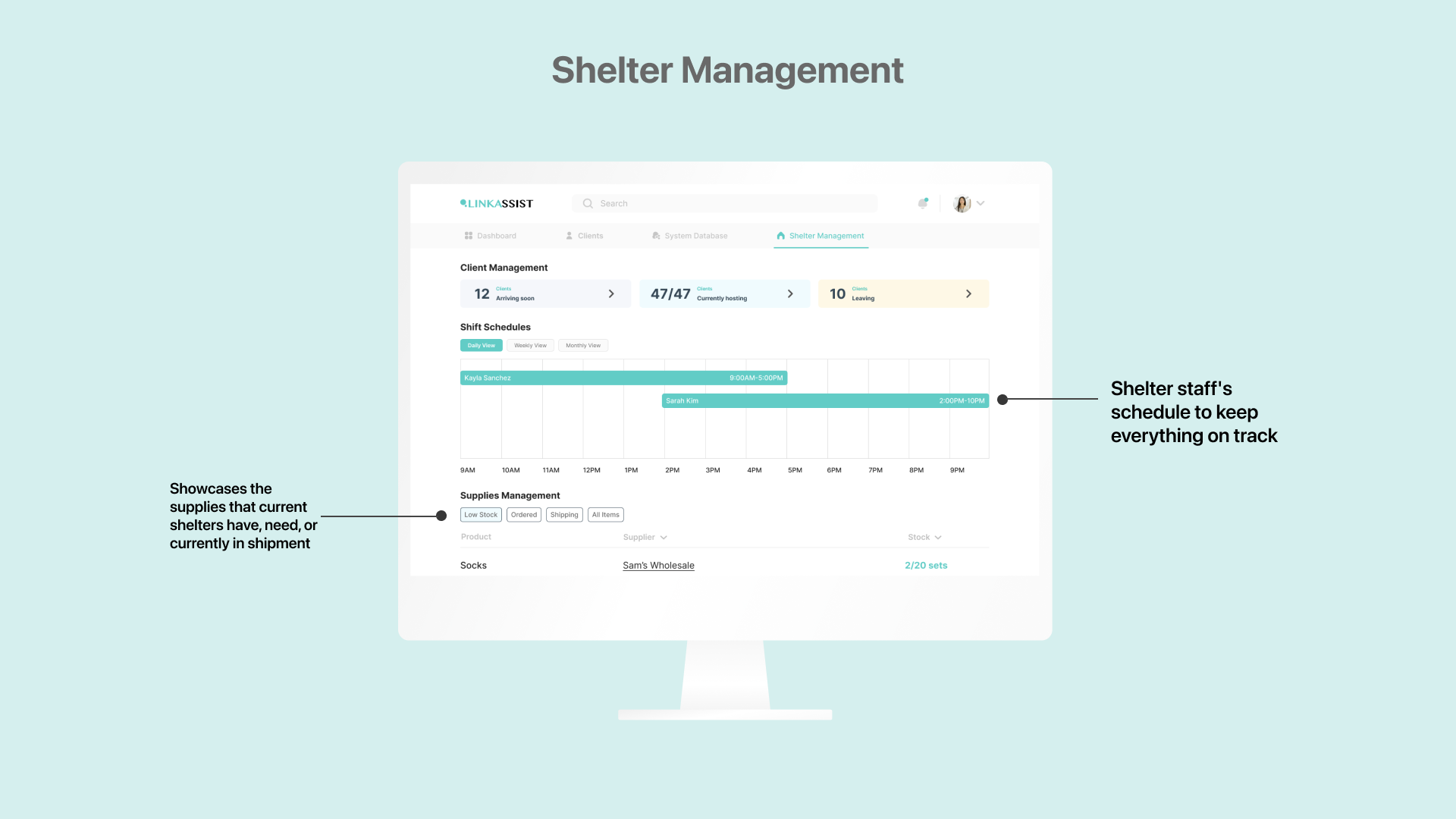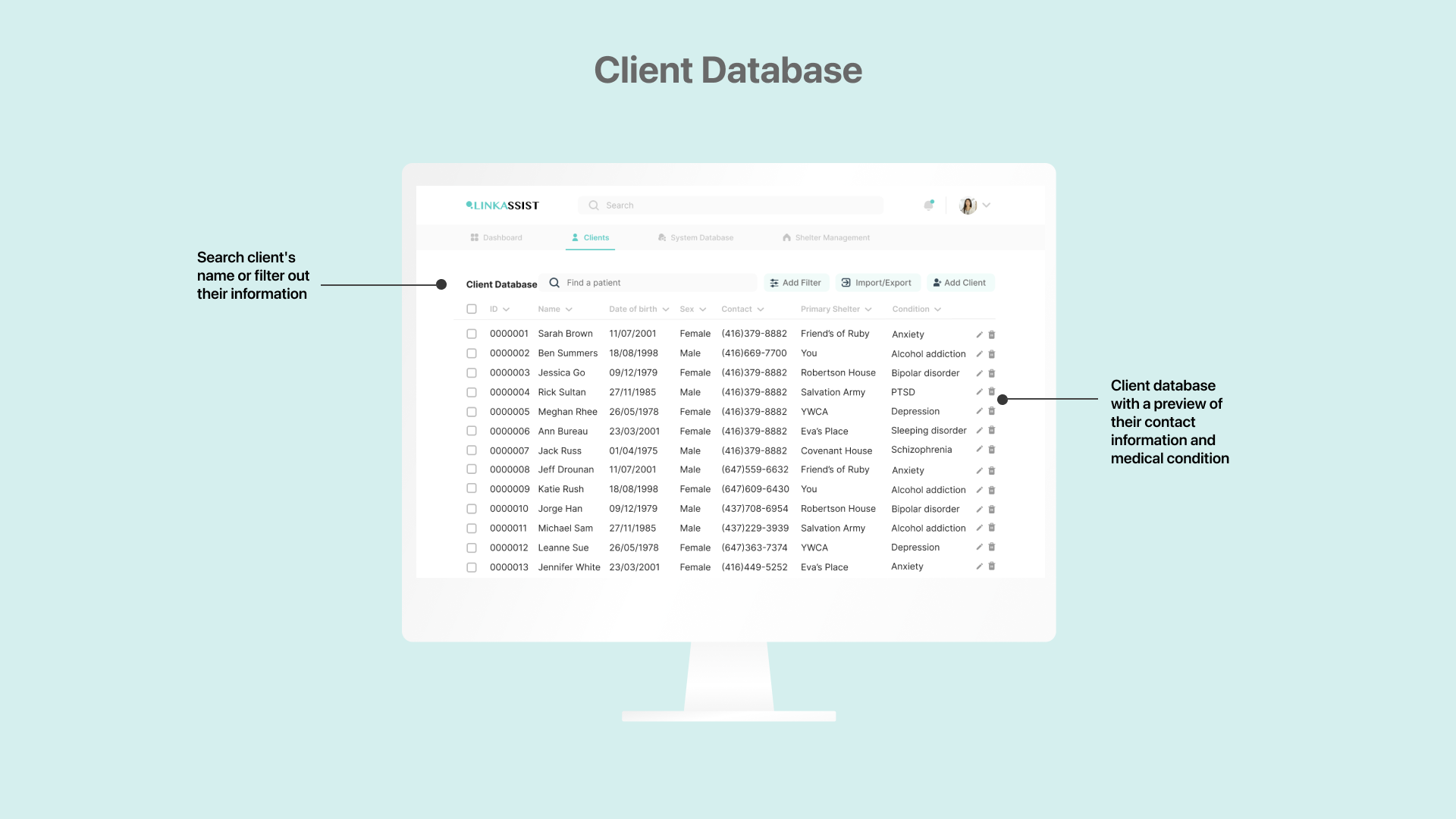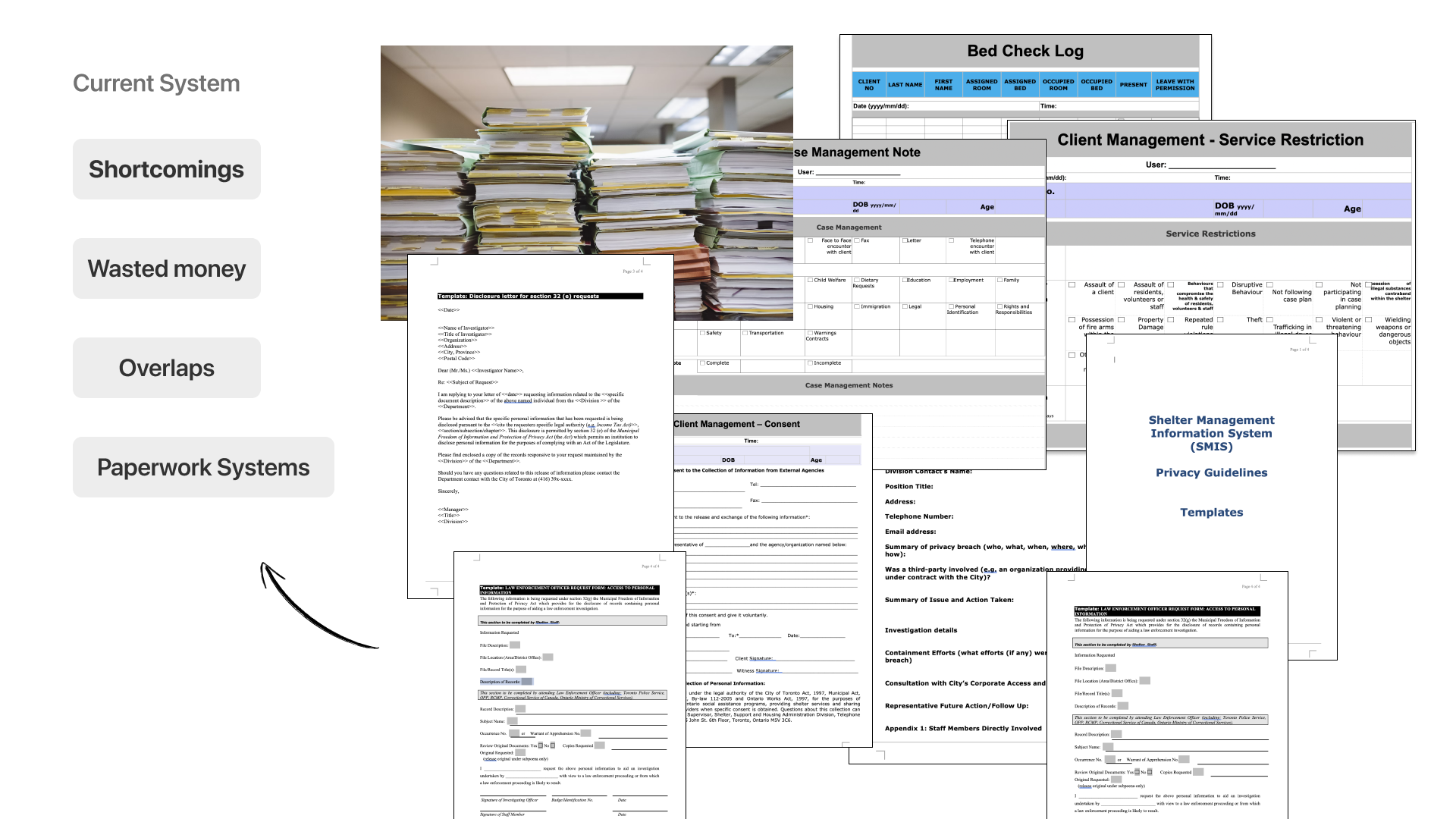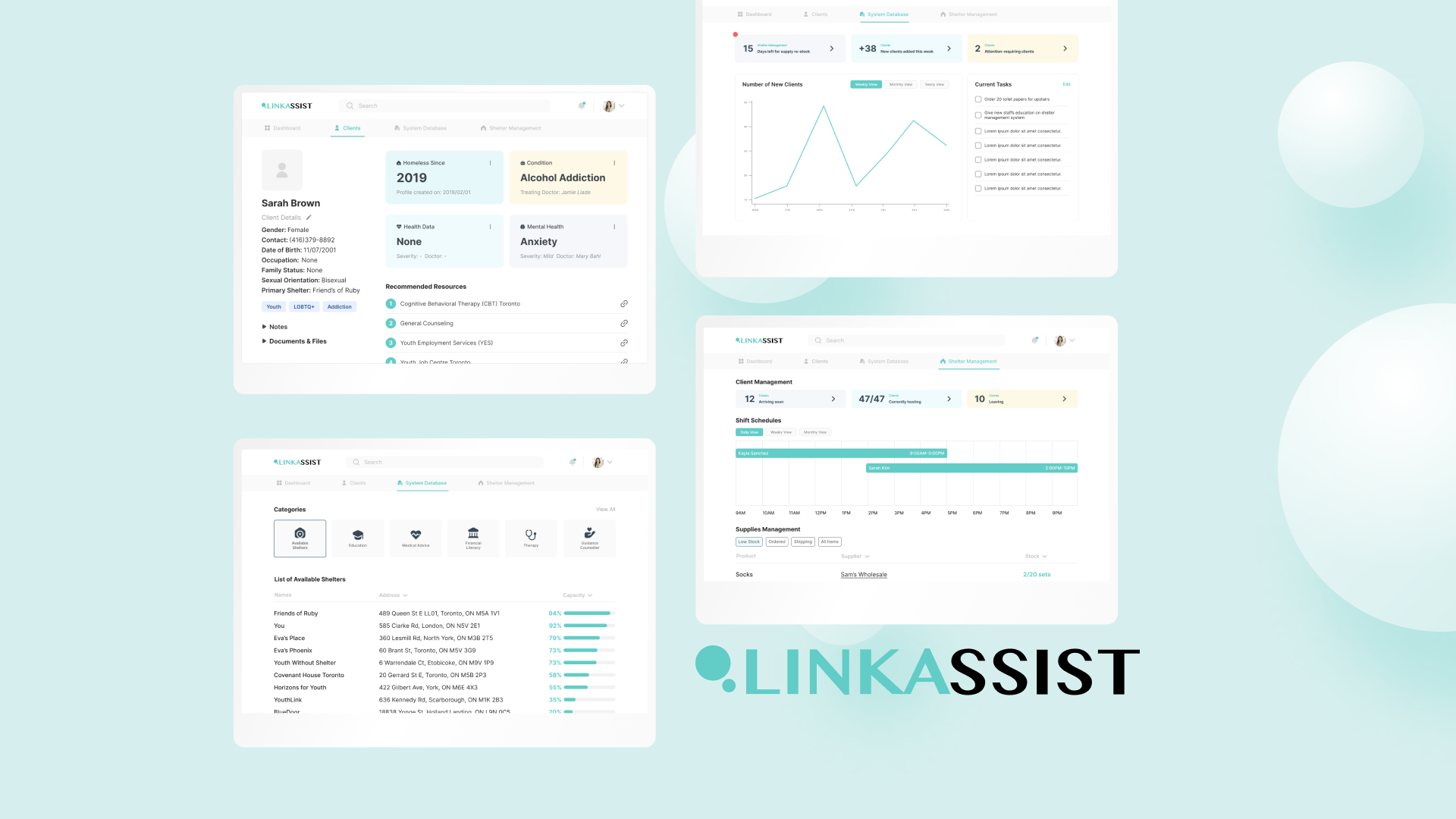
Team
Camie Wong
Alicia Yi
Shaheer Saif
Jenny Zhao
Roles
UX Designer, researcher, storytelling, presenter
Tools
Figma
Duration
48 hours
Context
Project Brief
RESEARCH
How it Started
Project Overview:
UNSDG Goal 1: No Poverty
Homelessness is a humanitarian crisis that directly affects the well-being and dignity of individuals. It involves people living without stable shelter, making them vulnerable to harsh weather conditions, violence, and health risks. Providing stable housing is a basic human right and contributes to the overall quality of life.
The Goal
To revolutionize the support system for homeless individuals in Toronto by leveraging the synergy between technological innovation, thoughtful policy enhancements, and active community involvement. Through the seamless integration of technology and supportive policies, our aim is to optimize the administrative processes within homeless shelters. This transformation will empower shelter workers to focus more on the individual needs of those experiencing homelessness, fostering a more efficient and effective network of resources that brings about positive change for the community.
Problem Statement
How might we create a more efficient and effective network of homelessness resources that utilizes technology and automation to better support and empower homeless individuals in Toronto?
Objective
Research and Assessment: Understanding the challenges of service providers at homeless shelters and their impact.
Teamwork: Designing with service providers for a solution towards solving homelessness.
We interviewed shelters workers in homeless shelters across Canada. We learned that manually searching for resources by calling and emailing various organizations is a tedious and time-consuming process. This can result in overlooked clients, particularly those who are timid, and results in high costs since staff and service providers need to be compensated for their time.
Outcome
BEST Startup Experience Contest 2023
Out of 70 teams, we were one of the top 10 teams, and in the end, we won the Special Award issued by Bergeron entrepreneurs in Science and Technology and Lassonde School of Engineering.
How much do you think it costs to support a homeless person per year in Toronto?
It costs approximately $53, 144 to support one homeless person.
How much has Toronto invested in towards solving homelessness ?
Toronto has invested over $826 million towards solving homelessness, however, the current response system is slow and fragmented, which results in a cost of $53 thousand per year to support a homeless person.
Identifying the Problem
Initial Ideas and Limitations
Our initial idea was to directly focus on the affected homeless people. During our brainstorming process, we discussed many different ways of how we can create a plan to help the homeless. First, we identify their needs, which is having a shelter, food and clean water. Before we get started, we reached out to homeless shelters around us to ask whether we could interview the homeless people to capture a better understanding of their challenges, needs and goals. However, one of our limitations was due to the concern with privacy matters. We were told that we weren’t allow to interview any of their clients. Instead, the workers at the homeless shelter will be able to do our interviews for us.
Interviewing Shelter Staffs
For this research case study, we spoke with Katherine and Jason from YOU Homeless Shelter to gain insight into the potential solutions for homelessness. We learned that manually searching for resources by calling and emailing various organizations is a tedious and time-consuming process. This can result in overlooked clients, particularly those who are timid, and high costs due to compensating staff and service providers for their time.
Understanding the Problem
Insights from Interviews with Shelter Workers
From the interviews, our participants mentioned that the staff deal with many paperworks throughout the day. This is the Toronto Shelter Information Management System. It provides a framework in which various service providers can work together. But the issue is, it requires shelter workers to do a ridiculous amount of paperwork for every single client. There is also no standardized communication system in which different service providers can collaborate.
The Question
In the current homelessness challenges in Toronto, how can we enhance support for individuals experiencing homelessness when shelter workers are burdened with overwhelming paperwork?
How Might We Statement
So how might we create a more efficient and effective network of homelessness resources that utilizes technology and automation to better support and empower homeless individuals in Toronto?
Pivoting Our Focus
Instead of focusing on the Homeless people as the target user in which there is a huge accessibility barrier and limitations due to a lot of factors such as privacy issues. We decide to pivot our focus to empower the shelter staff that help these people and make the work they do more efficient and effective.
Our Solution
By combining technological advancements with supportive policies and community engagement, it is possible to streamline administrative processes in homeless shelters, allowing shelter workers to devote more time and attention to addressing the needs of those experiencing homelessness.
What is LinkAssist?
LinkAssist is a digital platform for shelter staff that streamlines resource allocation and client data allowing for a more efficient and cost effective response to homelessness in the city of Toronto.
Our Platform: LinkAssist
Our platform provides a database of resources and client profiles for individuals experiencing homelessness. The client profile page streamlines the process of understanding each person's situation for the workers efficiently. I aim to emphasize the recommended resources optimized based on the individual's data. For example, if Sarah is struggling with anxiety, the system offers a direct link to book a therapy session to help manage her anxiety.
